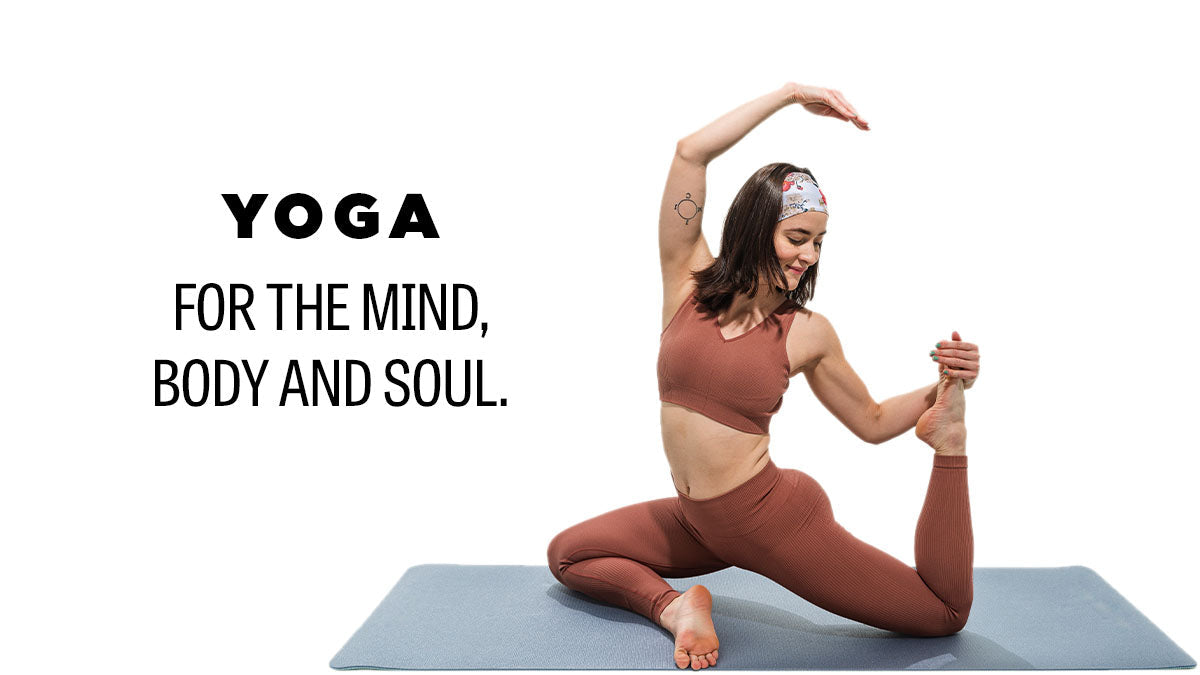
Yoga for the Mind, Body, and Soul with Claire
I found my way to yoga via a used bookstore in Pike’s Place Market in Seattle. I was visiting my family while on break from graduate school and was feeling heavy with anxiety and depression. While perusing through the dusty bookshelves, a book on the empirical research supporting Buddhist practices popped out at me. I’m not sure what captivated me – I had never studied much Asian philosophy – and to this day I still just call it kismet. It marked the beginning of my journey to better see and understand myself, and to ultimately become a student and teacher of yoga.
When I began studying yoga, I had a preconceived notion of what it might be, based off the classes I had taken as a young athlete. What I’ve learned (over many years) is that it is a highly sophisticated system for organizing one’s relationship to the self, others, and the universe. It is also not a religious belief that must be taken on to benefit from it – rather, it is a tool for seeing things as they really are. This is done through the body, mind, and soul.
Mind
One of the first practices you are taught in yoga is how to become aware of your thoughts. Eckhart Tolle compares our thoughts to “an annoying roommate” constantly commenting on every aspect of existence. If you take a moment to sit quietly with yourself, you may get to meet this roommate yourself!
Most of the time we operate on autopilot, accepting everything that our mind serves up as factual truths that will serve us moving forward. Our predilections, desires, and aversions are constantly sorting out the world in front of us to make decisions. In short, our control center is typically only sorting out one thing – how do I get more of what I want, and less of what I do not want?
Many Yoga philosophers would agree that there is no problem with humans having desires. The problem appears when we act against our higher mind for short term gratification. Even worse, when we operate from unconscious desire, we may get results that harm us (yes, eating ice cream always seems like a delicious idea). The more we practice watching our immediate reactions and busy thoughts, without any judgement, the more space we give ourselves to make informed decisions. This extra “space” in my mind has improved my relationships by helping me recognize when emotions arise that need to be processed before I speak (most of the time).

Body
One of the most familiar tenets of Yoga in the West are the yoga poses that are practiced in group classes or on a mat at home. These postures have many health benefits for the body (check out this podcast from Dr. Andrew Huberman on the benefits of stretching). Not only does the physical practice of yoga increase our mobility, but it can also relax our nervous system and provide the calming effect that many people experience leaving a class. This is largely because Yoga teaches us how to access our breath in a way that we do not consciously achieve in our daily busy life, which in turn triggers our parasympathetic nervous system.
Amazingly, yoga postures can also act on our tissues in a way that helps us process emotions and feelings, as shown through the rigorous research of the landmark book on trauma, The Body Keeps the Score.
As someone who loves to work out and exert stress on the body, my yoga practice has been enormously helpful in managing my nervous system and relaxing my muscles. I can always tell when I have not been resetting regularly!

Soul
Yoga also helps us address issues of the soul, by giving us the tools to look at ourselves with non-judgement and compassion. We all must act in life (even inaction is a choice!) and many of us struggle to identify the right action to take. Yoga gives us the tools to put our senses at ease and tend to the mind. Once we have processed, we can hear the deep wisdom of our soul speaking.
I came to yoga without understanding how profound the connection between the mind, body, and soul really is. Over the years, I’ve seen a growing body of scientific literature supporting these ancient practices of physical and emotional regulation (such as the HeartMath Institute and work on breath by James Nestor).
When you take time to see yourself and others with grace, life becomes less personal and egoic. When you open to reality and your place in the order of the world, you begin to act more clearly. When you’re able to see yourself not as separate, but as part of the whole, you can unlock new levels of meaning in your life.
As a yoga teacher, I love to see more people practicing. I also know that yoga can appear intimidating to many people (especially after hearing how all-encompassing and transformational it can be!). If you are on a journey to better wellness, start with your body. Try out a local studio or online teacher (I love Yoga with Adriene) and simply begin there. Once you’ve tended to the basic needs for movement and nutrition, you will be much better able to find the connection to your body and to others. The smallest steps forward are all it takes to come into harmony with mind, body, and soul.

Where to find Claire
Check out her website or follow her on social @itscoachclaire and as always stay tuned for more from JUNK!
Claire's Headband Picks
